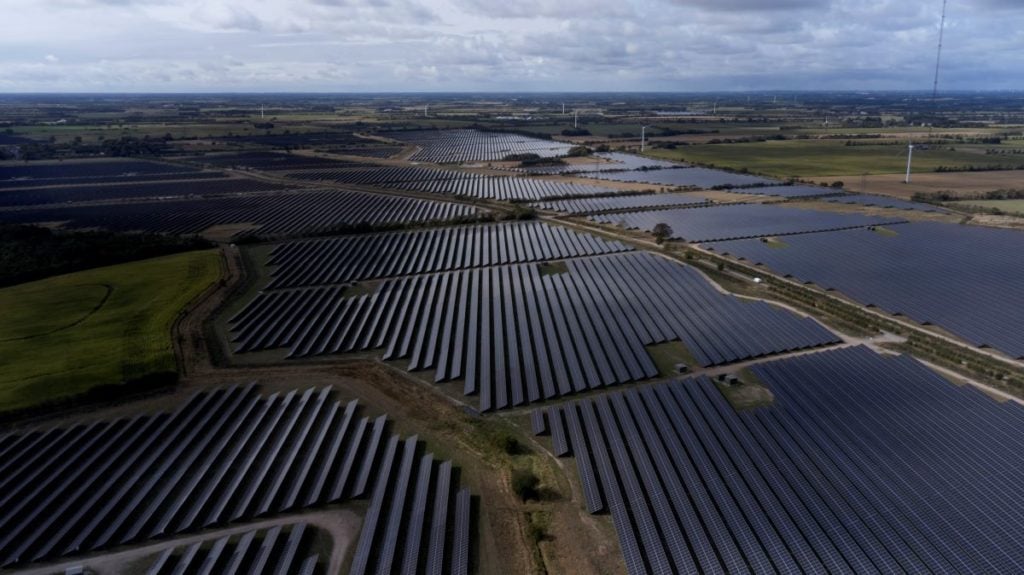
A new report from independent think tank Ember Climate notes that wind and solar generation in the EU have cut fossil fuel generation by one-fifth, between 2019 and 2023, with a 113% increase in operating solar capacity driving much of this change.
Over the four-year period, EU countries added 52GW of new wind capacity to reach total installed capacity of 219GW. This compares to 137GW of new solar capacity added over this period, pushing the total installed solar capacity to 257GW. In terms of electricity generation, wind remains a greater contributor to the EU energy mix than solar, accounting for 17.6% of the bloc’s electricity generation in 2023, as shown in the graph below.
Try Premium for just $1
- Full premium access for the first month at only $1
- Converts to an annual rate after 30 days unless cancelled
- Cancel anytime during the trial period
Premium Benefits
- Expert industry analysis and interviews
- Digital access to PV Tech Power journal
- Exclusive event discounts
Or get the full Premium subscription right away
Or continue reading this article for free
However, the growth of solar power in the EU’s electricity generation figures is notable, with generation more than doubling between 2019 and 2023, the fastest rate of growth of any power source. This is also a much more consistent form of growth than any other power source, with solar the only power source to not see its share of the EU electricity generation mix fall year-on-year over this period.
The combined growth of solar and wind almost perfectly mirrored the decline in the contribution of fossil fuel generation. Ember reports that wind and solar generation added 226TWh to the EU’s energy mix between 2019 and 2023, while fossil generation fell by 247TWh, and while correlation is not necessarily causation, the parallels between the decline of fossil fuels, and the growth of wind and solar, is notable.
NECPs driving change
The Ember report suggests ambitious policy from EU leaders has helped drive this change, pointing to the targets set in place by the latest round of National Energy and Climate Plans (NECPs). Last year, PV Tech reported how the latest draft of national governments’ NECPs had significantly increased their targets for solar deployment, and Ember notes that these drafts now aim to install 592GW of solar capacity by the end of the decade, up from an earlier target of 384GW.
Similarly, these drafts increased the bloc’s wind targets, albeit to a smaller extent, from 430GW to 510GW by 2030, suggesting that the EU expects solar to be a larger part of the continent’s energy mix by the end of the decade. The NECPs also aim for renewables, as a whole, to account for 66% of the EU’s energy mix by 2030, up from an earlier target of 55%.
The report notes that this wide-ranging policy support has encouraged new renewable power developments across the continent, beyond the typical leaders in the renewable energy space. Latvia leads the EU in percentage change in new wind and solar installations between 2019 and 2023, with a 400% growth, ahead of Lithuania (316.7%) and Hungary (264.7%), none of which are giants in the clean energy sector, with just 6.8GW of solar and wind capacity in operation collectively.
However, this rate of change is a significant positive for the EU, which is underdoing a “historic, permanent shift,” in its energy mix, according to Sarah Brown, Europe programme director at Ember.
“The EU now has more home grown wind and solar than ever, pushing both coal and gas electricity generation down to historic lows,” said Brown. “Ambitious, world-leading climate policies, combined with targeted measures to get off Russian gas, have solidified into real and sustained momentum. The EU is now in the midst of a historic, permanent shift away from reliance on fossil fuels for power.”
Questions remain
However, questions remain as to the ability of the EU to deliver some of the large-scale change needed to meet some of its more ambitious NECP targets. Germany, for instance, more than doubled its solar installation target from the 2019 to 2023 draft of its NECPs, and now aims to install 215GW of operating solar capacity by the end of the decade, as shown in the graph below.
Germany is now aiming to meet over one-third of the EU’s total solar installation targets by 2030, a significant challenge considering Germany and Europe’s largest solar project has an operating capacity of 605MW.
This is to say nothing of the looming challenge for the continent’s energy grids, which are already struggling to facilitate the power generated by new renewable power projects, a problem that is likely to worsen as more solar and wind projects are brought online.
A report from industry lobby group the European Round Table for Industry found that Europe’s energy infrastructure could need up to €800 billion (US$870 billion) of investment by the end of the decade, in parallel to the investments made in sheer power generation.






